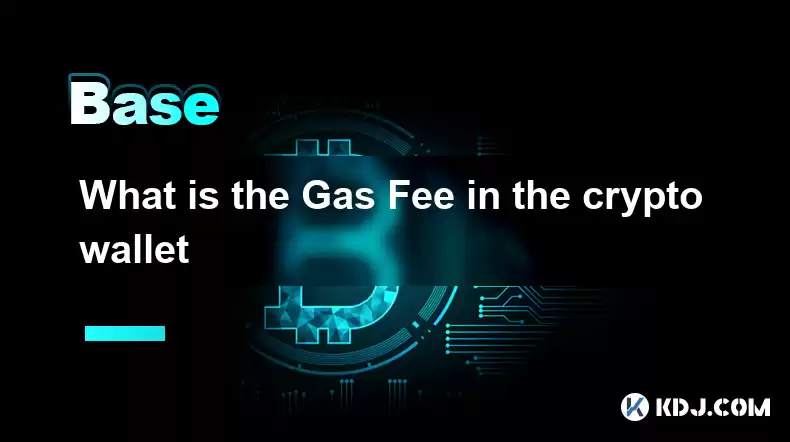-
 Bitcoin
Bitcoin $117400
-0.46% -
 Ethereum
Ethereum $3768
0.60% -
 XRP
XRP $3.551
2.09% -
 Tether USDt
Tether USDt $1.000
0.00% -
 Solana
Solana $203.2
11.30% -
 BNB
BNB $770.9
1.92% -
 USDC
USDC $0.9999
0.01% -
 Dogecoin
Dogecoin $0.2709
-0.02% -
 Cardano
Cardano $0.9024
4.49% -
 TRON
TRON $0.3139
0.60% -
 Hyperliquid
Hyperliquid $45.60
-1.41% -
 Stellar
Stellar $0.4730
-1.34% -
 Sui
Sui $4.025
2.15% -
 Chainlink
Chainlink $19.79
2.19% -
 Hedera
Hedera $0.2724
-2.39% -
 Avalanche
Avalanche $25.93
3.05% -
 Bitcoin Cash
Bitcoin Cash $524.0
-1.83% -
 Shiba Inu
Shiba Inu $0.00001558
0.50% -
 Litecoin
Litecoin $116.7
-0.30% -
 UNUS SED LEO
UNUS SED LEO $8.996
0.00% -
 Toncoin
Toncoin $3.334
1.83% -
 Polkadot
Polkadot $4.506
0.34% -
 Uniswap
Uniswap $10.99
4.83% -
 Ethena USDe
Ethena USDe $1.001
0.03% -
 Pepe
Pepe $0.00001461
3.17% -
 Monero
Monero $320.3
-1.01% -
 Bitget Token
Bitget Token $4.935
0.36% -
 Dai
Dai $0.9998
0.00% -
 Aave
Aave $322.4
-1.25% -
 Bittensor
Bittensor $455.6
9.33%
What is the Gas Fee in the crypto wallet
Gas Fees on Ethereum are payments for transaction processing, calculated by Gas Price times Gas Used, and can spike during network congestion or complex transactions.
Apr 21, 2025 at 06:56 pm

The concept of the Gas Fee is fundamental in the world of cryptocurrencies, especially for those who use blockchain networks like Ethereum. Understanding what a Gas Fee is, how it works, and its implications can help users manage their transactions more effectively. This article delves into the intricacies of Gas Fees within crypto wallets, providing detailed insights into this crucial aspect of blockchain transactions.
What is a Gas Fee?
A Gas Fee is the amount of cryptocurrency required to perform a transaction or execute a smart contract on a blockchain network, particularly on the Ethereum network. The term "gas" refers to the unit of measure for the computational effort required to execute operations on the blockchain. Essentially, Gas Fees are payments made to miners or validators for processing and verifying transactions on the network.
How are Gas Fees Calculated?
The calculation of Gas Fees involves two main components: Gas Price and Gas Limit. The Gas Price is the amount of cryptocurrency (usually measured in Gwei, a subunit of Ether) that a user is willing to pay per unit of gas. The Gas Limit is the maximum amount of gas a user is willing to use for a transaction. The total Gas Fee is then calculated as:
[ \text{Gas Fee} = \text{Gas Price} \times \text{Gas Used} ]
Where Gas Used is the actual amount of gas consumed by the transaction, which can be less than or equal to the Gas Limit.
Factors Affecting Gas Fees
Several factors influence the Gas Fees users have to pay. These include:
- Network Congestion: During times of high demand, such as during popular token launches or major network upgrades, the Gas Fees can spike due to increased competition for block space.
- Transaction Complexity: More complex transactions, such as those involving smart contracts, require more computational effort and thus higher Gas Fees.
- Gas Price: Users can set their own Gas Price, which can affect how quickly their transaction is processed. A higher Gas Price can lead to faster transaction confirmation but at a higher cost.
How to Check and Set Gas Fees in Your Crypto Wallet
Setting and checking Gas Fees in a crypto wallet can vary depending on the wallet you are using. Here is a general guide on how to manage Gas Fees in a typical Ethereum wallet:
- Open your wallet application and navigate to the section where you can send or receive cryptocurrency.
- Select the cryptocurrency you wish to send, usually Ether (ETH) for transactions on the Ethereum network.
- Enter the recipient's address and the amount you wish to send.
- Look for the Gas Fee settings. This might be labeled as "Gas Price" and "Gas Limit" or something similar.
- Adjust the Gas Price to set how much you are willing to pay per unit of gas. Some wallets offer a slider or preset options like "Slow," "Average," and "Fast" to help you decide.
- Set the Gas Limit if necessary. Most wallets automatically set a reasonable Gas Limit based on the transaction type, but you can adjust it if you need to.
- Review the total Gas Fee calculated based on your settings and confirm the transaction.
The Impact of Gas Fees on Users
Gas Fees can significantly impact the user experience in the crypto world. High Gas Fees can deter users from making frequent transactions or engaging with decentralized applications (dApps) that require multiple interactions. On the other hand, low Gas Fees can make the network more accessible but may lead to slower transaction times if users set their Gas Price too low.
Strategies to Minimize Gas Fees
While Gas Fees are an inherent part of using blockchain networks, there are strategies users can employ to minimize these costs:
- Timing Transactions: Try to conduct transactions during off-peak hours when network congestion is lower, leading to lower Gas Fees.
- Batch Transactions: If you need to perform multiple transactions, consider batching them into a single transaction to reduce the total Gas Fees.
- Use Layer 2 Solutions: Layer 2 scaling solutions like Optimism or Arbitrum can significantly reduce Gas Fees by processing transactions off the main Ethereum chain and then settling them in bulk.
- Optimize Smart Contracts: If you are a developer, optimizing smart contracts to use less gas can lower the Gas Fees for users interacting with your dApp.
Real-World Examples of Gas Fee Fluctuations
To illustrate the impact of Gas Fees, let's look at a few real-world examples:
- During the CryptoKitties craze in 2017, the Ethereum network experienced significant congestion, causing Gas Fees to soar as users competed to buy and breed virtual cats.
- The launch of decentralized finance (DeFi) platforms like Uniswap has led to periods of high Gas Fees due to the popularity and complexity of transactions on these platforms.
- Ethereum network upgrades, such as the transition to Ethereum 2.0, have also influenced Gas Fees as users rushed to participate in staking and other related activities.
Frequently Asked Questions
Q: Can I get a refund on unused gas?
A: Yes, if a transaction uses less gas than the set Gas Limit, the unused gas is refunded to the sender's wallet. However, the Gas Price paid for the used gas is non-refundable.
Q: How do I know if my Gas Fee is too high or too low?
A: You can use tools like Etherscan or EthGasStation to check current Gas Prices and estimate the time it will take for your transaction to be processed. If your transaction is taking too long, your Gas Price might be too low. If it's processed quickly but at a high cost, your Gas Price might be too high.
Q: Are there any alternatives to paying high Gas Fees on Ethereum?
A: Yes, besides using Layer 2 solutions, you can also consider using other blockchain networks like Binance Smart Chain or Polygon, which often have lower transaction fees compared to Ethereum.
Q: Can Gas Fees be predicted?
A: While it's difficult to predict Gas Fees with absolute certainty, you can use historical data and current network conditions to make educated guesses. Tools like GasNow provide real-time Gas Fee estimates to help you plan your transactions.
Disclaimer:info@kdj.com
The information provided is not trading advice. kdj.com does not assume any responsibility for any investments made based on the information provided in this article. Cryptocurrencies are highly volatile and it is highly recommended that you invest with caution after thorough research!
If you believe that the content used on this website infringes your copyright, please contact us immediately (info@kdj.com) and we will delete it promptly.
- XRP, Bitcoin, Ripplecoin: Navigating the Crypto Landscape in 2025
- 2025-07-22 20:30:13
- Cardano Ecosystem Watch: Can PayFi Token Remittix Trigger an ADA Overtake?
- 2025-07-22 20:50:13
- JasmyCoin Price Forecast: Chart Analysis Points to Potential Surge
- 2025-07-22 20:55:13
- Trump, Bitcoin, and Altcoins: A New York Minute on Crypto's Political Play
- 2025-07-22 21:00:13
- Shiba Inu, XRP, and Little Pepe: Navigating the Meme Coin Mania in NYC
- 2025-07-22 21:30:13
- Bitcoin's Role in IntelBroker's Takedown: A New Era of Crypto Crime Enforcement
- 2025-07-22 21:10:15
Related knowledge

What is the difference between CeFi and DeFi?
Jul 22,2025 at 12:28am
Understanding CeFi and DeFiIn the world of cryptocurrency, CeFi (Centralized Finance) and DeFi (Decentralized Finance) represent two distinct financia...

What is the difference between a sidechain and a Layer 2?
Jul 20,2025 at 11:35pm
Understanding the Concept of SidechainsA sidechain is a separate blockchain that runs parallel to the main blockchain, typically the mainnet of a cryp...

What is the Inter-Blockchain Communication Protocol (IBC)?
Jul 19,2025 at 10:43am
Understanding the Inter-Blockchain Communication Protocol (IBC)The Inter-Blockchain Communication Protocol (IBC) is a cross-chain communication protoc...

How does sharding improve scalability?
Jul 20,2025 at 01:21am
Understanding Sharding in BlockchainSharding is a database partitioning technique that is increasingly being adopted in blockchain technology to enhan...

What is the "crypto trilemma" of scalability, security, and decentralization?
Jul 19,2025 at 06:28pm
Understanding the Concept of the Crypto TrilemmaThe crypto trilemma refers to the challenge of simultaneously achieving scalability, security, and dec...

What is a cliff and vesting schedule in tokenomics?
Jul 20,2025 at 10:28am
What Does a Cliff Mean in Tokenomics?In tokenomics, a cliff refers to a specific period during which token holders are not allowed to access or transf...

What is the difference between CeFi and DeFi?
Jul 22,2025 at 12:28am
Understanding CeFi and DeFiIn the world of cryptocurrency, CeFi (Centralized Finance) and DeFi (Decentralized Finance) represent two distinct financia...

What is the difference between a sidechain and a Layer 2?
Jul 20,2025 at 11:35pm
Understanding the Concept of SidechainsA sidechain is a separate blockchain that runs parallel to the main blockchain, typically the mainnet of a cryp...

What is the Inter-Blockchain Communication Protocol (IBC)?
Jul 19,2025 at 10:43am
Understanding the Inter-Blockchain Communication Protocol (IBC)The Inter-Blockchain Communication Protocol (IBC) is a cross-chain communication protoc...

How does sharding improve scalability?
Jul 20,2025 at 01:21am
Understanding Sharding in BlockchainSharding is a database partitioning technique that is increasingly being adopted in blockchain technology to enhan...

What is the "crypto trilemma" of scalability, security, and decentralization?
Jul 19,2025 at 06:28pm
Understanding the Concept of the Crypto TrilemmaThe crypto trilemma refers to the challenge of simultaneously achieving scalability, security, and dec...

What is a cliff and vesting schedule in tokenomics?
Jul 20,2025 at 10:28am
What Does a Cliff Mean in Tokenomics?In tokenomics, a cliff refers to a specific period during which token holders are not allowed to access or transf...
See all articles

























































































